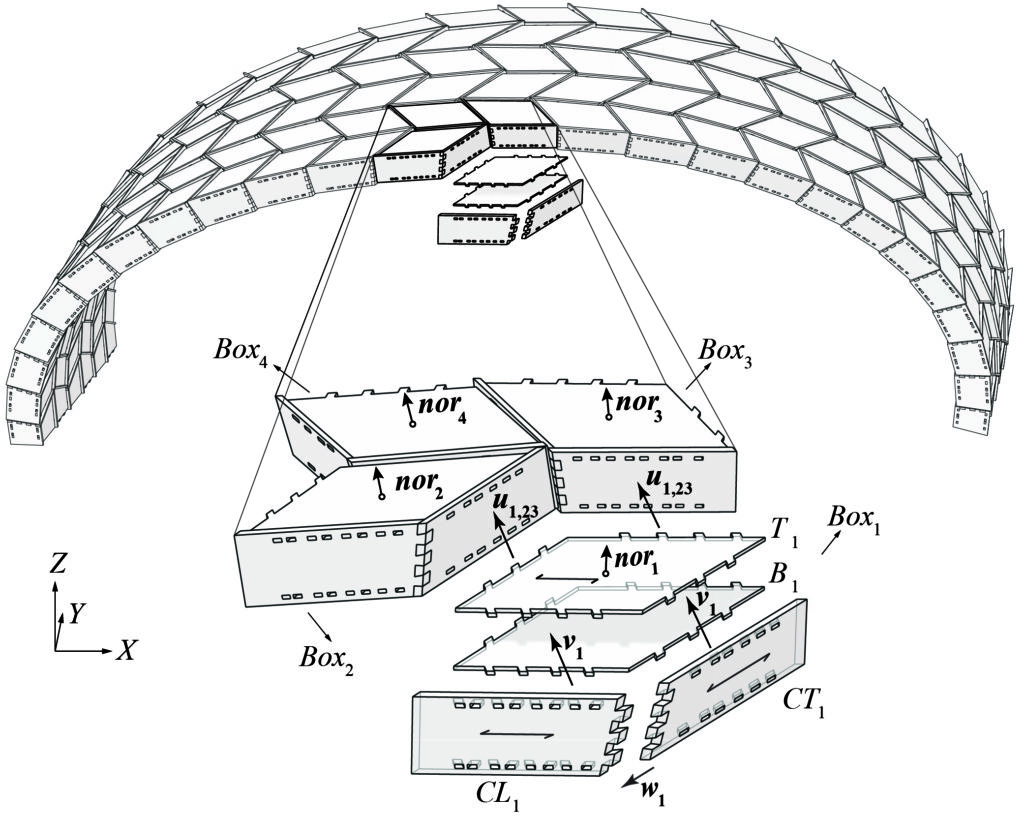The proliferation of interactive modeling tools has led to the emergence of Computer-Aided Design (CAD) in digital architecture. As a result, algorithmic programming has overcome the limitations of traditional CAD, allowing for the creation of custom-defined geometries that are beyond human manual ability. Additionally, with advancements in computational platforms, numerical simulation techniques have become widely integrated into Computer-Aided Engineering.
Advancements in engineered timber products, such as Laminated Veneer Lumber panels, along with the use of Computer Numerical Control machines for digital fabrication, have revived the use of the Integral Mechanical Attachment (IMA) technique in timber plates. The IMA technique enables the joining of timber elements using only wood-wood interlocking mechanisms, without the need for connectors.
Based on these advancements, an interdisciplinary design framework for timber plate structures has recently been introduced. This framework facilitates the design of Integrally-Attached Timber Plate structures with custom-defined forms.

Figure: Aryan Rezaei Rad and Petras Vestartas (2021) “Structural design methodology in Integrally-Attached Timber Plate structures” Book Chapter, in “Design of Integrally-Attached Timber Plate Structures” by Yves Weinand, Routledge.
The immediate application of research discoveries, in reality, requires a global and exact understanding of the structure under consideration. To gain insight into the complex behavior of structures, numerical simulations are carried out in parallel to physical experiments and digital fabrication, computer-aided geometry explorations, and assembly planning. The role of the digital model in the process of designing timber structures is to open the field of possibilities to new structural forms, new construction methods, and consequently, new assembly technologies. The design framework introduced in this chapter of the book aims to include the geometry generation, the definition of the assembly sequence, the fabrication process of the wood-wood connections and their mechanical behavior, kinematic of timber plates, equilibrium equations that govern the structural behavior, and associated numerical simulations of Integrally-Attached Timber Plate structures. A wide range of case studies from medium-scale to large-scale structures are presented is supported by the design framework introduced.


